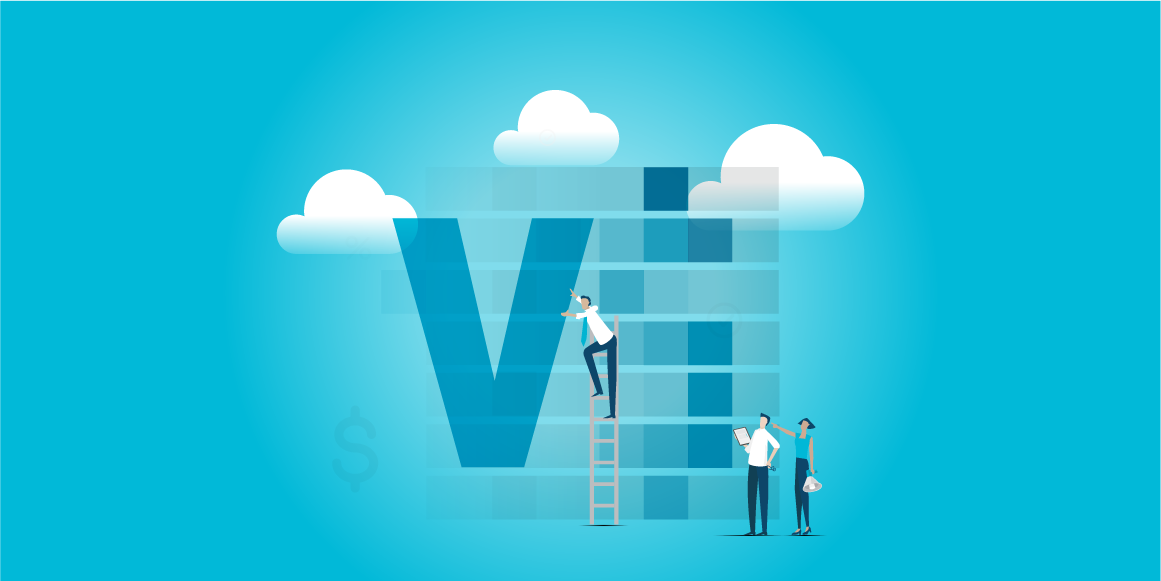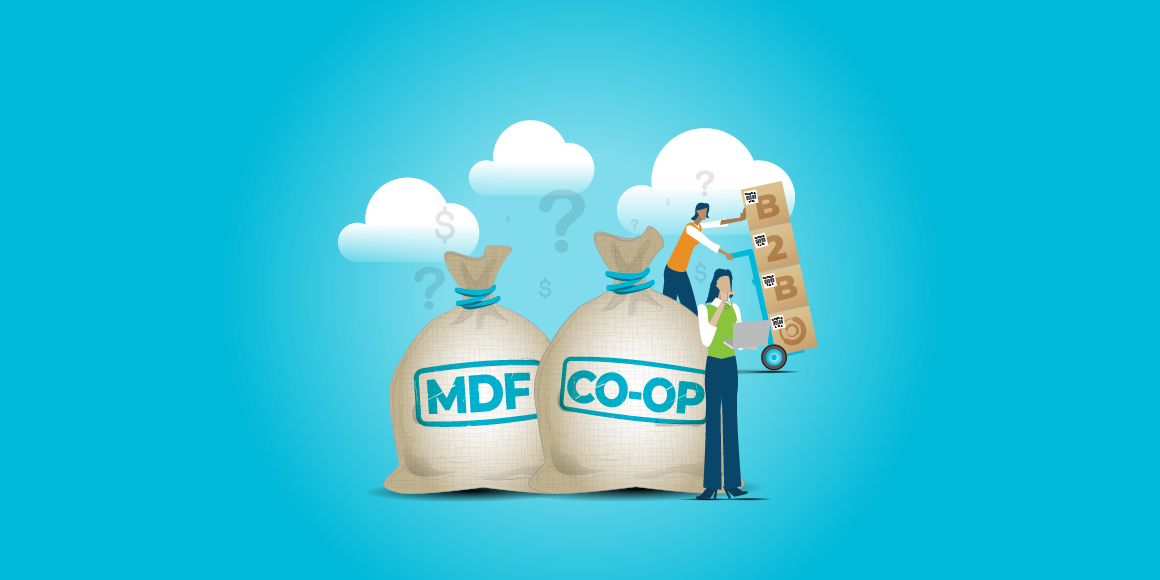Engaging in co-marketing activities with reseller partners is a fantastic opportunity for everyone involved to efficiently execute a marketing plan, hit marketing goals, and elevate channel marketing strategy. Both you and your channel partner can glean the benefits of:
- Enhanced Brand Visibility: Joint marketing initiatives amplify brand exposure and recognition.
- Expanded Reach: Collaborative efforts facilitate reaching a wider audience and potential customer base.
- Increased Sales Opportunities: Co-marketing activities can lead to more sales opportunities and revenue growth.
- Improved Customer Engagement: Collaborative campaigns foster deeper connections with customers and prospects.
- Cost-Effective Marketing: Sharing marketing resources reduces individual costs and maximizes the impact of marketing efforts.
The (frequently) unsung hero behind these benefits that drive partner success? Market development funds. Market development funds, commonly referred to as MDF or Co-Op funds, are financial resources allocated by a brand to support the marketing efforts of a channel partner.
These funds are instrumental in bolstering various activities such as advertising, promotions, events, and other collaborative initiatives that aim to enhance brand visibility and drive sales. By providing financial support, market development funds enable reseller partners to execute impactful channel marketing campaigns, contributing to the expansion of the brand's reach and the generation of more sales opportunities. According to Forrester, high-performing organizations invest 23% more in market development funds than low-growth organizations. They're also a great way to generate interest in channel partner programs, as the promise of additional marketing dollars can spark partner engagement.
So, what are the similarities and differences between the types of market development funds programs? And what considerations do you need to make before getting started? That’s what we’re diving into today. Read on to learn about the use cases, best practices, and compliance considerations associated with MDF and Co-Op funds.
MDF
A marketing development fund (MDF), sometimes known as a business development fund (BDF), are funds specifically allocated by channel or reseller businesses for partner marketing. The money is specifically used to promote brand awareness, generate sales leads, and fuel business growth while going to market with a partner, retailer, distributor, or wholesaler.
In contrast to other forms of funding, an MDF program usually allocates on a discretionary (non-contractual) basis. They are used to seed new market opportunities and are accessible before revenue is generated. This means that partners, retailers, distributors, and wholesalers can utilize the funding case by case to meet tactical lead generation, enablement, or product/market awareness needs.
From the vendor's viewpoint, it also serves to drive immediate desired behavior. This approach supports companies in attracting, forging, and equipping enduring partnerships.
Use Cases
Funds from an MDF program can be used for things like:
- Driving awareness and demand generation initiatives such as hosting webinars, creating educational content, or organizing local events to attract potential customers.
- Supporting joint marketing campaigns including digital advertising, social media promotions, and content syndication to expand market reach.
- Implementing lead generation programs such as targeted email campaigns, search engine marketing, or telemarketing activities to identify new sales prospects.
- Enabling partners, distributors, retailers, and wholesalers to participate in events like trade shows, industry events, or product launch activities to showcase products and solutions to a wider audience.
- Investing in joint sales training and enablement programs focused on specific solutions, vertical markets, or customer segments to boost partner capabilities and expertise.
Co-Op
Cooperative programs, often referred to as Co-Op programs, are contractual, accrual-based market development funds. In the case of a Co-Op program, companies and their partners, distributors, retailers or wholesalers share the cost of marketing activities. This includes things like advertising, promotion, and other sales-driving initiatives.
Activities covered by a Co-Op fund must fulfill specific guidelines and requirements. Unlike MDF or BDF, it also accumulates as a defined revenue percentage is attained (between 1 and 5 percent depending on the strategy). The number should be contractually stipulated at the beginning of a partnership. With so much of the planning done up front, vendors can systemically allocate Co-Op funds for particular channel marketing initiatives.
Use Cases
Co-Op funds can be used for things like:
- Promoting specific product lines to boost regional sales and brand visibility.
- Implementing localized marketing campaigns aimed at engaging local customer bases through the utilization of shared marketing resources.
- Supporting regional events and initiatives to enhance community outreach and customer engagement efforts using shared marketing resources.
- Launching joint branding and advertising efforts to expand market presence and reach.
- Supporting reseller partners in creating and promoting compelling product demonstrations and customer events.
- Facilitating training programs aimed at enhancing the sales and technical expertise of channel partners.
What Are Some Best Practices for MDF and Co-Op Programs?
When used effectively, MDF and Co-Op funds can significantly enhance your brand's digital footprint and boost the overall success of your marketing initiatives. However, to maximize the potential, it's crucial to understand the development funds best practices:
Common Best Practices for Both MDF and Co-Op Funds
- Funding Activities that Increase Digital Footprint: In this digital age, the buyer's journey is significantly influenced by online resources. Hence, funding activities that increase your brand's digital presence can be beneficial (in addition to direct mail campaigns).
- Employing Tiered Reimbursement: Offering varying degrees of reimbursement as rewards encourages your partners to execute through-funnel marketing initiatives, all the way from outside the sales funnel to post-sale. This is a great way to encourage participation.
- Rewarding Execution: It is essential not only to fund planning activities, but to subsidize people who successfully execute measurable marketing initiatives.
- Learning, Triage, and Sharing: Following successful leaders, learning from their strategies, adjusting your approaches, sharing insights, and customizing programs based on partner capabilities can drive success.
Unique Best Practices for MDF or Co-Op
- MDF Funds: Unlike Co-Op, MDF funds can be reimbursed on renewals, referrals, and references, depending on the product and business model. This approach encourages partners to engage in long-term marketing initiatives.
- Co-Op Funds: An exceptional practice for Co-Op funds is providing partners with access to pre-approvals and possible partial pre-payment. As these funds are typically tied to proof of performance, repaying partners as quickly as possible upon demonstrated success is a crucial practice.
Remember, it's not entirely about the quantity of funds provided but more importantly, how quickly you replenish them to support the marketing efforts of your partners. The leaders in Co-Op funding successfully deliver payments in 14 days or less (or after efforts from your partners). Robust processes and payment platforms are critical to making this a good user experience for partners, especially for those partnerships that extend across countries and currencies.
Legal and Compliancy Considerations
Legal and compliance considerations are vital for MDF and Co-Op programs due to the inherent complexities and potential pitfalls they present. These programs often involve substantial financial investments that require strict governance and fall under the authority of anti-trust laws. Abiding by both industry-specific and international regulations helps ensure accountability, transparency, and a fair competitive environment. Plus, not adhering to these laws can result in significant financial penalties and reputational damage.
Some important considerations:
- Anti-Bribery and Anti-Corruption Laws: MDF and Co-Op programs need to be carefully designed and managed to avoid falling foul of anti-bribery and anti-corruption laws. This includes ensuring that funds are not used to influence purchasing decisions unethically, but to genuinely promote and develop the business.
- Co-Op Advertising Guidelines: Co-Op advertising programs, where a brand shares the advertising costs with channel partners, must follow the Federal Trade Commission's guidelines. To avoid potential legal issues, it's crucial that all advertising materials are truthful, non-deceptive and substantiated.
- Record-Keeping and Reporting: Record-keeping is an essential aspect of MDF/Co-Op program management to prove adherence to compliance laws. This includes keeping a log of claims, approvals, payments, proof-of-performance, and all communication between you and your partners.
- Tax Considerations: Where your channel partners are based could heavily influence the amount of tax your company must pay. It's important to understand the tax implications of your MDF/Co-Op activities in these regions to avoid potential penalties.
- Antitrust Laws: To prevent the risk of antitrust violations, MDF/Co-Op programs must be designed to encourage healthy competition and not favor one partner over another disproportionately.
- Data Security: If your MDF/Co-Op programs involve the collection and management of partner or customer data, ensure you're following robust data protection practices in line with GDPR and other data privacy laws.
If you want to get more into the tactical details, we put together a guide on how to build a compliant MDF or Co-Op program that will make your legal team love you.
Market Development Funds + Your Tech Stack
While the logistics of MDF and Co-Op can seem intimidating, utilizing appropriate tools can provide valuable assistance in managing these processes effectively. When choosing a funds management tool, consider:
- Efficiency: Choose a tool with automated processing. Specifically, look for one that implements intelligent rules that validate and process claims swiftly and accurately. This saves time, reduces human error, and accelerates turnaround time from claim submission to payment.
- Transparency: Having a direct line of vision into your funds management tool’s real-time insights is vital. Businesses can track and control spend, monitor performance, and identify areas requiring improvement.
- Compliance: A platform's fraud detection and compliance management features ensure the integrity of your programs. This not only protects your budget but also maintains the credibility of your brand.
- Ease of use: Having a user-friendly interface that is easy to navigate makes fund management more accessible to all members of your team.
- Scalability: A platform with robust infrastructure can easily handle an increase in volume, making it a versatile solution for businesses of all sizes and changing market and legal dynamic.
- Global scope: If you are running a worldwide or cross-country program, ensure you explore the full country to country capabilities of the management tool, specifically relating to funding and payment capabilities.
Why the 360insights Fund Management Solution Might Be Right for You
So why should you choose the 360insights fund management tool? The answer is simple: it’s a comprehensive solution that meets all above criteria for driving growth through optimized funds management.
This tool is designed with agility in mind, enabling businesses to quickly adapt and respond to changing market dynamics and channel partner expectations. With it, companies can efficiently execute their marketing plan, track and evaluate their marketing strategies, and ensure that their fund spending aligns with their strategic objectives. Its superior analytics and reporting capabilities provide meaningful insights, empowering businesses to make data-driven decisions on their fund allocation. In short, it’s a strategic asset for getting a fund management program up and running, driving operational efficiency, and hitting marketing goals.






